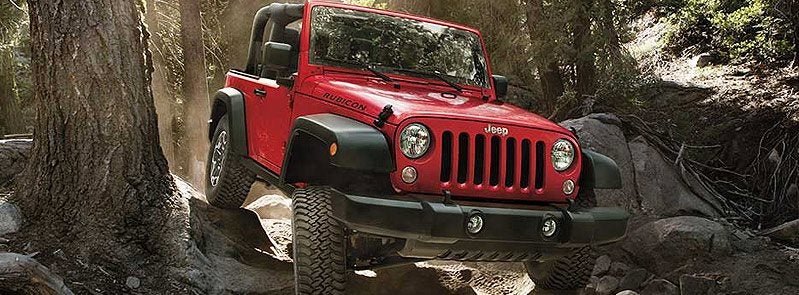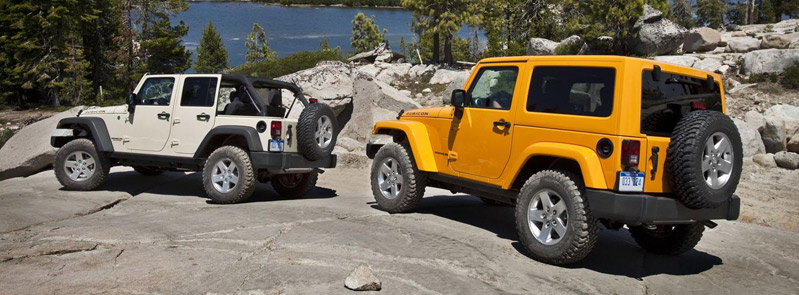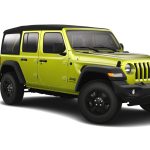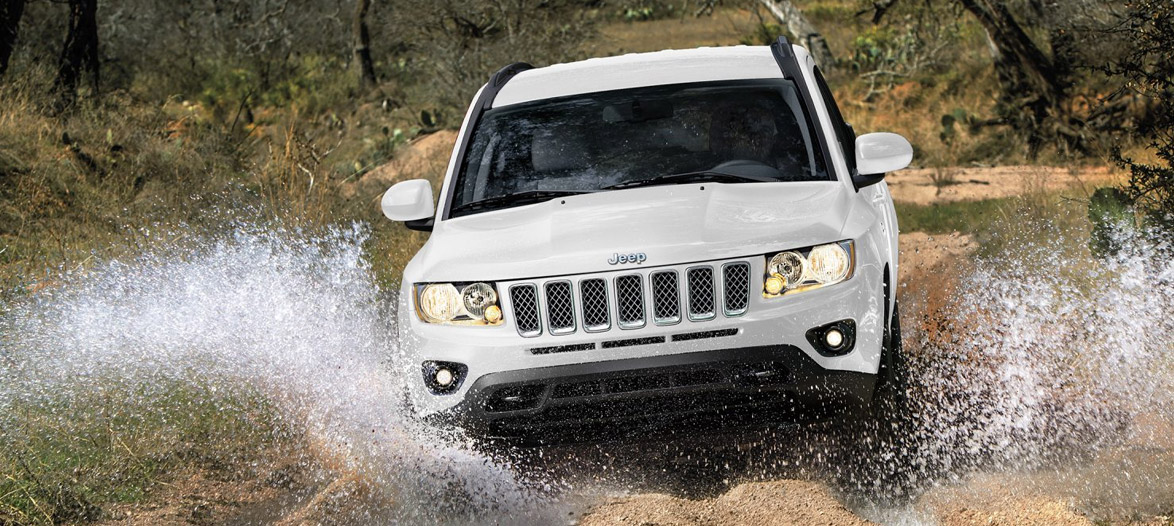
Quite a few people who are new to the Jeep brand, and even some longtime owners are confused about the differences between the Jeep YJ, TJ and CJ. That’s understandable, because unless you’ve had some personal experiences with each one, it’s easy to get them confused, or to know little about one or more of the off-road models.
The CJ is a legend in the Jeep line, garnering quite a bit of respect from people. It was launched in 1944 as a civilian version of the vehicle that won World War II. Americans instantly took to it, thanks to its ability to get people just about anywhere without much fuss. The CJ was lightweight and incredibly Spartan, both mechanically and when it came to the interior. Really, they were all about getting through tough terrain and not much else. It was such a solid design and the vehicle was largely unchanged through the 1986 model year, which was when the first of the Wranglers was launched. Know that purchasing a CJ will be expensive because they’ve become classics and are highly sought after by enthusiasts.
The biggest thing you should know about the YJ is that it was a redesign of the legendary CJ. They came with a stiffer frame, which helps with durability, plus the rear seating area has more protections. Stability was also improved through the use of wider front leaves in the suspension, plus a winder track and body. That being said, the suspension is a little lower, so fitting a YJ with big tires requires lifting the vehicle or cutting away at the body more than on the CJ. Jeep launched it with the 1987 model year and wrapped it up with the 1995 model. The fastest way to tell it apart from the other Jeeps is to look for the square headlights. In 1992, the YJ introduced an important change with fuel injection, boosting fuel efficiency and reliability.
After the YJ came the TJ in 1997, after no Wrangler was sold for the 1996 model year. The TJ reworked the off-roader once more, introducing a number of key changes. The round headlights made a comeback, hearkening to the brand’s legacy. Coil springs were also added to the vehicle, departing from the fat spring suspension on the YJ, greatly improving the ride quality. In other words, the TJ is superior for overall comfort on the road and even on trails. The TJ also offers more flex, making it a better option for rock crawling, while the YJ is more likely to be caught with at least one tire in the air. The TJ ran all the way through the 2006 model year.
A big change came to the TJ in 2003, called the Rubicon. It represents the most hardcore Wrangler as it rolls off the production line, thanks in big part to the 4-1 transfer case and 4.10 gears. It’s geared mostly for taking on rocky terrain, such as its namesake, but that means the Rubicon isn’t the best option for sand. Also included on the vehicle is an electronic-disconnect sway bar, plus front/rear electric lockers that make quickly adapting to changing terrain a breeze.
In the end, there’s no one version of the Jeep that’s the absolute best, despite what people will argue. What you have are pluses and minuses with the CJ, YJ and TJ. The best way to choose which one is ideal for you is to honestly assess what you want to do in your Jeep, then figure out which model fits the bill.
Looking for a Jeep CJ, YJ or TJ? We’ve Got You Covered in Columbia, TN
Be sure to check out our inventory of used Jeeps – we’ve got over 100 in stock, plus, if we don’t have it, we’ll help you find what you’re looking for.





![[Facebook]](https://www.chryslerdodgejeepramofcolumbia.net/blogs/1020/wp-content/plugins/bookmarkify/facebook.png)
![[LinkedIn]](https://www.chryslerdodgejeepramofcolumbia.net/blogs/1020/wp-content/plugins/bookmarkify/linkedin.png)
![[Twitter]](https://www.chryslerdodgejeepramofcolumbia.net/blogs/1020/wp-content/plugins/bookmarkify/twitter.png)
![[Yahoo!]](https://www.chryslerdodgejeepramofcolumbia.net/blogs/1020/wp-content/plugins/bookmarkify/yahoo.png)
![[Email]](https://www.chryslerdodgejeepramofcolumbia.net/blogs/1020/wp-content/plugins/bookmarkify/email.png)



